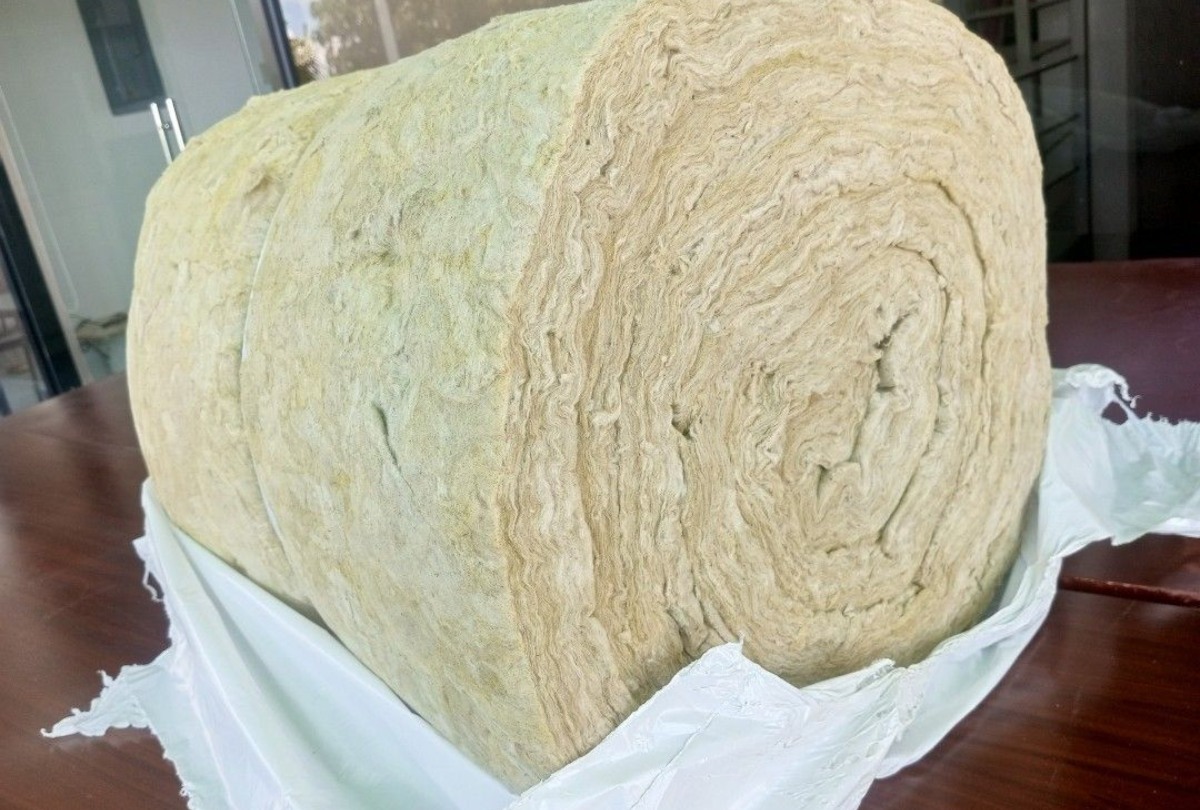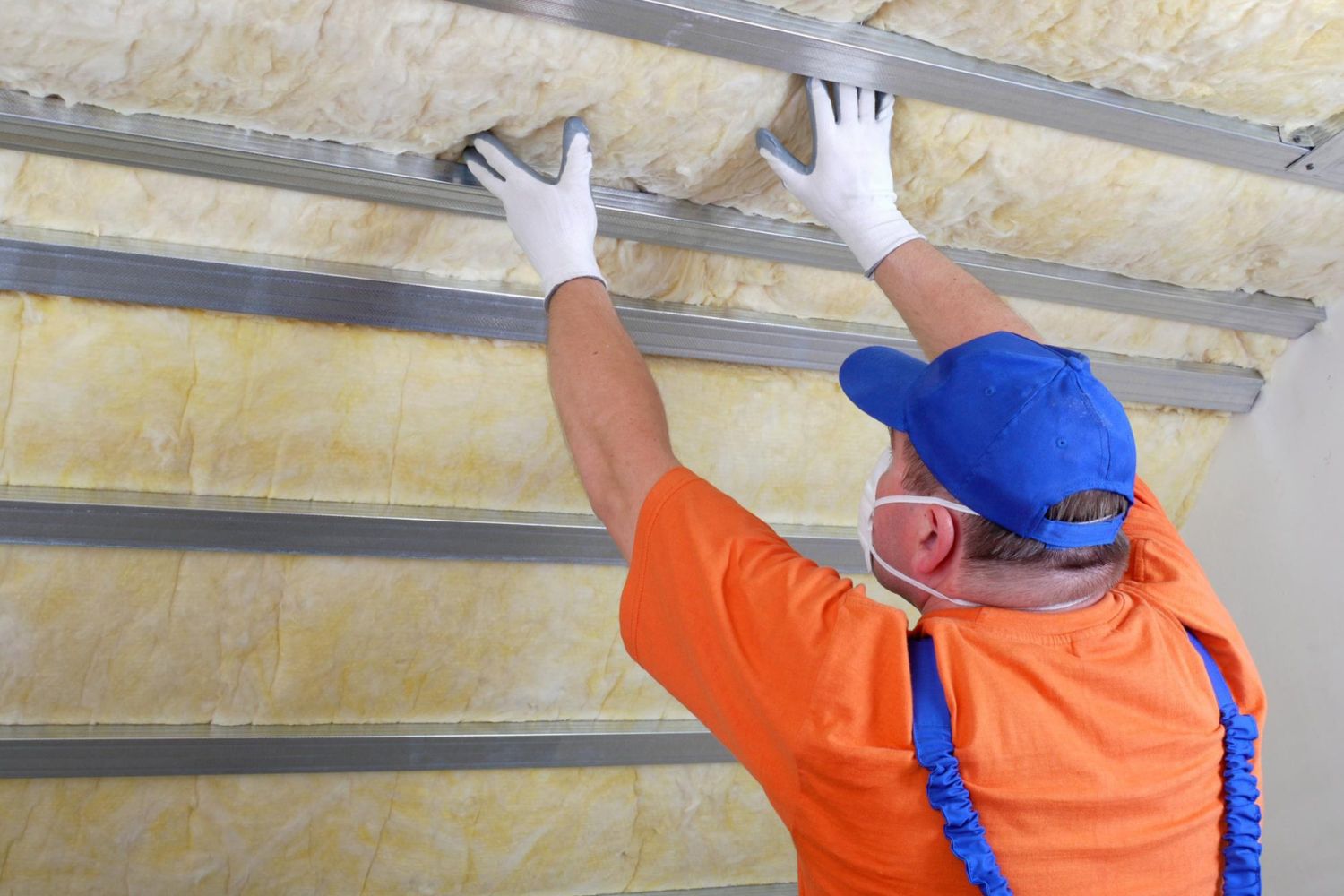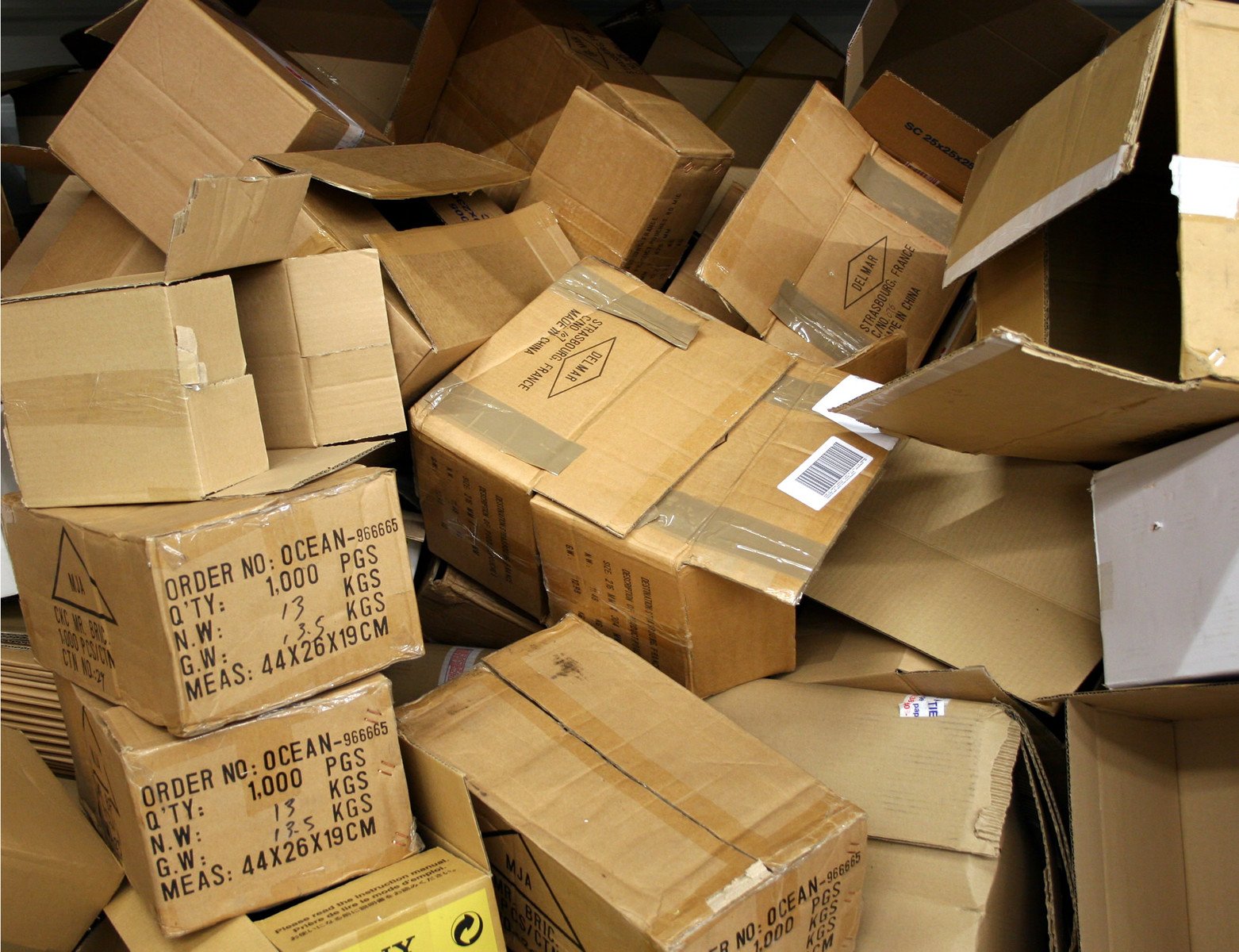Home>Articles>Where Would You Likely Find Blanket Insulation?


Articles
Where Would You Likely Find Blanket Insulation?
Modified: January 9, 2024
Discover where you can commonly find blanket insulation in articles. Expert tips on how to effectively insulate your space for maximum comfort and energy efficiency.
(Many of the links in this article redirect to a specific reviewed product. Your purchase of these products through affiliate links helps to generate commission for Storables.com, at no extra cost. Learn more)
Introduction
Blanket insulation is a versatile and commonly used material in the field of construction. It is designed to provide thermal insulation and improve energy efficiency in residential, commercial, and industrial buildings. This type of insulation material is flexible and comes in the form of rolls or batts, making it easy to install in various areas of a building.
In this article, we will explore the definition, applications, areas of a building where blanket insulation is commonly used, benefits, types of blanket insulation materials, installation process, and considerations for choosing the right insulation for your needs.
So, whether you are a homeowner looking to improve the energy efficiency of your home or a commercial building owner interested in reducing heating and cooling costs, understanding the uses and benefits of blanket insulation is essential.
Let’s dive in and explore the world of blanket insulation!
Key Takeaways:
- Blanket insulation, also known as batt insulation, is a versatile material used in residential, commercial, and industrial buildings to improve energy efficiency, thermal comfort, noise reduction, and fire safety.
- When choosing blanket insulation, consider factors such as R-value, vapor barrier needs, environmental impact, and cost to make an informed decision that ensures optimal thermal resistance and long-term energy savings.
Read more: Where To Buy Basement Blanket Insulation
Definition of Blanket Insulation
Blanket insulation, also known as batt insulation, is a type of thermal insulation material that is used to reduce heat transfer between the interior and exterior of a building. It is called “blanket” insulation because it typically comes in long rolls or large sheets, providing a continuous and seamless coverage when installed.
The primary purpose of blanket insulation is to create a thermal barrier that helps to maintain a comfortable indoor temperature by preventing heat loss in the winter and heat gain in the summer. It works by slowing down the movement of heat through conduction, convection, and radiation.
Blanket insulation is made from various materials, including fiberglass, mineral wool, natural wool, cellulose, and foam. These materials are chosen for their insulating properties, durability, and ease of installation.
The effectiveness of blanket insulation is measured in terms of its R-value. The R-value represents the insulation material’s resistance to heat flow, with higher R-values indicating better insulation performance.
Blanket insulation is widely used in both residential and commercial construction, as well as in industrial facilities. It is typically installed in walls, roofs, floors, attics, basements, and crawlspaces to create a barrier against heat transfer and improve energy efficiency.
Now that we have a clear definition of blanket insulation, let’s explore its applications in different types of buildings.
Applications of Blanket Insulation
Blanket insulation finds extensive applications in various types of buildings, including residential buildings, commercial buildings, and industrial facilities. Let’s take a closer look at how blanket insulation is used in each of these settings:
Residential Buildings:
In residential construction, blanket insulation is commonly used to improve the energy efficiency and comfort of homes. It is installed in walls, roofs, floors, and attics to reduce heat loss during the winter and heat gain during the summer. By creating a thermal barrier, blanket insulation helps homeowners save on heating and cooling costs while ensuring a comfortable indoor environment.
Additionally, blanket insulation reduces noise transmission from outside, providing a quieter living space. It also helps in controlling moisture and preventing the formation of condensation, which can lead to mold and mildew growth.
Commercial Buildings:
Blanket insulation plays a crucial role in commercial building construction. It is used in walls, roofs, floors, and ceilings to provide thermal insulation and improve energy efficiency. By reducing heat transfer, blanket insulation helps regulate indoor temperatures, reducing the reliance on heating and cooling systems.
Commercial buildings, such as office spaces, retail stores, and restaurants, often have large areas that require insulation. Blanket insulation is a cost-effective option for these buildings, as it can be easily installed in large sections, covering a significant amount of surface area in one go.
Moreover, blanket insulation helps in creating a comfortable working environment for employees and customers by reducing noise pollution and controlling moisture levels.
Industrial Facilities:
In industrial settings, including manufacturing plants, warehouses, and distribution centers, blanket insulation is used for a variety of purposes. It is primarily used to insulate walls, roofs, and floors to enhance energy efficiency and meet regulatory requirements.
Industrial facilities often generate a significant amount of heat during manufacturing processes. Blanket insulation helps in containing the heat within the facility, reducing energy waste and improving overall efficiency. It also aids in creating a more comfortable working environment for employees and protecting equipment from temperature extremes.
Furthermore, blanket insulation helps in mitigating the risk of fire spread in industrial facilities by providing a fire-resistant barrier in walls and roofs.
Whether it’s a residential home, commercial building, or industrial facility, blanket insulation offers numerous benefits in terms of energy efficiency, thermal comfort, noise reduction, and fire safety. The specific application of blanket insulation may vary depending on the type of building and its requirements.
Next, let’s explore the different areas of a building where blanket insulation is commonly used.
Areas of a Building Where Blanket Insulation is Commonly Used
Blanket insulation is a versatile material that can be used in various areas of a building to provide effective thermal insulation. Let’s explore the common areas where blanket insulation is commonly installed:
Walls:
Blanket insulation is often used in exterior walls to reduce heat transfer between the inside and outside of a building. It is installed between the studs, ensuring that there are no gaps or voids. This helps to create a continuous thermal barrier, preventing heat loss in the winter and heat gain in the summer.
Insulating interior walls with blanket insulation can also help in reducing sound transmission between rooms, providing a quieter living or working environment.
Roofs:
The roof is one of the major areas where heat gain or loss can occur in a building. Installing blanket insulation in the roof cavity helps to minimize thermal bridging and prevent heat transfer through the roof. This helps to maintain a comfortable indoor temperature and reduce the reliance on heating and cooling systems.
Roof insulation with blanket insulation also helps to prevent the formation of condensation on the interior surface of the roof, which can lead to moisture damage and mold growth.
Read more: Where To Find Mirrors
Floors:
Blanket insulation is commonly used in floors to provide thermal insulation and ensure a comfortable living or working environment. It is installed between the floor joists and helps to prevent heat loss through the floor. This is especially important in spaces above unheated areas, such as garages or crawlspaces.
Floor insulation with blanket insulation also helps to improve soundproofing between floors, reducing the transmission of noise from one level to another.
Attics:
The attic is another critical area where blanket insulation is commonly used. It is installed on the attic floor or between the roof rafters to create a thermal barrier, preventing heat transfer between the attic and the living space below.
Properly insulating the attic with blanket insulation helps to maintain a consistent indoor temperature, reduce energy consumption, and prevent ice dams and moisture issues in colder climates.
Basements:
Basement insulation with blanket insulation is essential for controlling heat loss and preventing moisture intrusion. It is typically installed on the interior walls of the basement, helping to create a thermal barrier and reduce heat transfer between the basement and the rest of the building.
Insulating basement walls with blanket insulation can also help in preventing condensation and moisture buildup, reducing the risk of mold and structural damage.
Crawlspaces:
Crawlspaces are often prone to moisture issues and heat loss. Installing blanket insulation in crawlspaces helps to create a thermal barrier and prevent heat transfer from entering or escaping through the crawlspace floor or walls. It also helps to control moisture, reducing the risk of mold and improving indoor air quality.
Blanket insulation is a versatile solution that can be used in multiple areas of a building to enhance energy efficiency, provide thermal comfort, and control moisture. Its flexibility and ease of installation make it a popular choice for both residential and commercial construction projects.
Now that we have explored the common areas of a building where blanket insulation is used, let’s move on to the benefits that blanket insulation provides.
Benefits of Blanket Insulation
Blanket insulation offers a range of benefits in terms of energy efficiency, thermal comfort, noise reduction, moisture control, and fire safety. Let’s explore these benefits in detail:
Energy Efficiency:
One of the key benefits of blanket insulation is its ability to improve energy efficiency in buildings. By creating a thermal barrier, it reduces heat transfer through walls, roofs, floors, and other areas, thus minimizing the need for excessive heating or cooling. This leads to lower energy consumption, reduced utility bills, and a smaller carbon footprint.
Thermal Comfort:
Blanket insulation helps to maintain a comfortable indoor temperature by preventing heat loss in the winter and heat gain in the summer. It creates a consistent and stable environment, reducing temperature fluctuations and drafts. This ensures that occupants feel comfortable year-round, regardless of the weather outside.
Noise Reduction:
Blanket insulation acts as a barrier against sound transmission, helping to reduce noise levels within a building. It absorbs airborne and impact noise, improving overall acoustic comfort. This is particularly beneficial in busy urban areas, near highways, or in multi-story buildings where noise pollution can be a problem.
Read more: How To Wear A Blanket Like A Poncho
Moisture Control:
Blanket insulation plays a crucial role in controlling moisture levels within a building. It helps to create a barrier against moisture intrusion, reducing the risk of condensation and mold growth. By preventing the buildup of moisture, it also helps to protect the structural integrity of the building and improve indoor air quality.
Fire Safety:
Many types of blanket insulation are inherently fire-resistant, providing an added layer of protection. They act as a barrier against the spread of fire, limiting its impact and allowing occupants more time to evacuate. Fire-resistant blanket insulation can help in meeting building code requirements and improving overall fire safety.
By choosing blanket insulation, building owners and occupants can enjoy these benefits, including increased energy efficiency, enhanced thermal comfort, reduced noise pollution, improved moisture control, and enhanced fire safety.
Now that we understand the benefits of blanket insulation, let’s explore the different types of insulation materials used in blankets.
Types of Blanket Insulation Material
Blanket insulation is available in various materials, each with its own characteristics and benefits. Let’s explore the different types of insulation materials commonly used in blankets:
Fiberglass:
Fiberglass is one of the most popular and widely used materials for blanket insulation. It is made from tiny glass fibers that are woven together to create a flexible and lightweight insulation material. Fiberglass insulation is known for its excellent thermal performance and affordability. It is non-combustible, moisture-resistant, and does not promote the growth of mold or mildew.
Read more: Where Do You Find The WPS Pin For HP Printer
Mineral Wool:
Mineral wool, also known as rock wool or mineral fiber insulation, is made from molten rock or slag that is spun into fibers. It offers excellent thermal and acoustic properties and is resistant to fire, moisture, and pests. Mineral wool insulation is commonly used in buildings where fire safety is a priority, as it is non-combustible and can withstand high temperatures.
Natural Wool:
Natural wool insulation is made from the wool of sheep or other animals. It is known for its superior thermal performance, excellent sound absorption, and moisture-wicking properties. Natural wool insulation is a sustainable and environmentally friendly option, as it is renewable and biodegradable. It is also non-toxic and has natural fire-retardant properties.
Cellulose:
Cellulose insulation is made from recycled paper or plant fibers, typically treated with fire-retardant chemicals. It is a cost-effective and eco-friendly option for blanket insulation. Cellulose insulation offers good thermal performance and is effective in reducing sound transmission. It is also resistant to pests and mold growth.
Foam:
Foam insulation, such as polyurethane or polystyrene, is another type of material used in blanket insulation. Foam insulation provides excellent thermal resistance, air sealing properties, and moisture control. It can be sprayed, injected, or installed as rigid panels or boards. Foam insulation is ideal for filling cavities and gaps, providing effective insulation in hard-to-reach areas.
Each type of insulation material has its own unique properties and benefits. The choice of blanket insulation material depends on factors such as insulation requirements, budget, environmental considerations, and specific project needs.
Now that we have explored the different types of insulation materials used in blankets, let’s move on to understanding the installation process of blanket insulation.
Read more: What Is Blanket Insulation Used For
Installation Process of Blanket Insulation
The installation process of blanket insulation involves several steps to ensure proper coverage and effectiveness. Let’s break down the installation process into four key steps:
1. Preparing the Surface:
Before installing blanket insulation, it is crucial to prepare the surface properly. This includes cleaning the area and removing any debris, dust, or old insulation. Ensure that the surface is dry and free from any moisture that could compromise the insulation’s effectiveness.
Additionally, it’s important to inspect the surface for any gaps, cracks, or air leaks. Seal any openings or gaps with caulk or weatherstripping before installing the insulation.
2. Measuring and Cutting the Insulation:
Once the surface is prepared, measure the length and width of the area where the insulation will be installed. Use these measurements to cut the blanket insulation to the appropriate size. It’s important to accurately cut the insulation to fit snugly between wall studs, floor joists, or roof rafters.
If using fiberglass or mineral wool insulation, use a utility knife or insulation knife to cut through the material. For foam or rigid insulation, a saw or specialized cutting tool may be required.
3. Securing the Insulation:
After cutting the insulation, place it in the desired location and secure it in place. For vertical installations, such as walls, use insulation supports or staples to hold the insulation flush against the surface. These supports should be evenly spaced to prevent sagging or gaps.
For horizontal installations, such as floors or ceilings, use wire or netting to hold the insulation in place. This helps to ensure that the insulation maintains its position while preventing settling or shifting.
Read more: Where To Find Grapes With Seeds
4. Insulating Obstacles and Openings:
During the installation process, be mindful of obstacles and openings, such as electrical outlets, pipes, and vents. Cut the insulation to fit around these obstacles, ensuring a proper seal. Use insulation tape or a caulking gun to seal any gaps around these openings, preventing air leaks that could compromise the insulation’s effectiveness.
For attic installations, be sure to leave proper ventilation space around soffit vents to prevent moisture buildup.
It’s important to follow manufacturer instructions and guidelines specific to the type of insulation being installed. Proper installation ensures that the blanket insulation performs optimally, providing the desired thermal and acoustic insulation benefits.
Now that we understand the installation process, let’s explore some important considerations when choosing blanket insulation.
Considerations for Choosing Blanket Insulation
When selecting blanket insulation for your building project, there are several important considerations to keep in mind. These factors can help you choose the right insulation material and ensure optimal performance. Let’s explore some key considerations:
R-value:
The R-value of insulation measures its thermal resistance. It indicates how well the insulation material resists heat flow. Higher R-values provide better insulation performance. Assess the insulation needs of your building and choose a blanket insulation with the appropriate R-value for your climate and energy efficiency goals.
Vapor Barrier:
A vapor barrier is a material used to prevent the movement of water vapor through walls, roofs, or floors. It helps to control moisture levels and prevent condensation. In areas with high humidity or significant temperature differences, consider using blanket insulation with an integrated vapor barrier or installing a separate vapor barrier to prevent moisture-related issues.
Read more: Where To Find Flax Seed
Environmental Impact:
Consider the environmental impact of the insulation material you choose. Look for insulation options made from recycled or renewable materials. Materials with lower carbon footprints and those designed to reduce energy consumption during manufacturing and installation are environmentally friendly choices. Additionally, consider the long-term durability and recyclability of the insulation material.
Cost:
Cost is an important consideration when choosing blanket insulation. Compare the upfront cost of different insulation materials and consider the long-term savings in energy costs. Keep in mind that high-performance insulation materials may have a higher initial cost but can provide significant long-term energy savings and return on investment.
It’s also important to consult with insulation professionals and adhere to local building codes and regulations. They can provide valuable insights and guidance based on the specific requirements of your project.
By considering factors such as R-value, vapor barrier needs, environmental impact, and cost, you can make an informed decision when selecting blanket insulation for your building project.
Now that we have explored the considerations for choosing blanket insulation, it’s time to wrap up our discussion.
Conclusion
Blanket insulation is a versatile and effective solution for providing thermal insulation in buildings. Whether it’s a residential home, commercial building, or industrial facility, blanket insulation offers numerous benefits, including improved energy efficiency, enhanced thermal comfort, noise reduction, moisture control, and fire safety.
By installing blanket insulation in walls, roofs, floors, attics, basements, and crawlspaces, you can create a thermal barrier that helps to maintain a comfortable indoor temperature, reduce energy consumption, and lower utility bills.
When choosing blanket insulation, consider factors such as the R-value to ensure optimal thermal resistance, the need for a vapor barrier to control moisture, the environmental impact of the material, and cost considerations. Consulting with insulation professionals and complying with local building codes is crucial for a successful insulation project.
Whether you opt for fiberglass, mineral wool, natural wool, cellulose, or foam insulation, proper installation is key. Prepare the surface, accurately measure and cut the insulation, secure it in place, and insulate around obstacles and openings to maximize its effectiveness.
Investing in high-quality blanket insulation can result in long-term energy savings, improved comfort, and a more sustainable building. It not only helps to reduce your carbon footprint but also contributes to a healthier and more environmentally friendly living or working environment.
So, whether you’re looking to upgrade your home’s insulation or improve the energy efficiency of a commercial or industrial building, consider blanket insulation as a reliable and effective solution. Enjoy the benefits it brings while contributing to a more sustainable future.
We hope this article has provided valuable insights into the world of blanket insulation and its applications. Now, it’s time to take action and make your building more energy-efficient and comfortable with blanket insulation!
Frequently Asked Questions about Where Would You Likely Find Blanket Insulation?
Was this page helpful?
At Storables.com, we guarantee accurate and reliable information. Our content, validated by Expert Board Contributors, is crafted following stringent Editorial Policies. We're committed to providing you with well-researched, expert-backed insights for all your informational needs.








0 thoughts on “Where Would You Likely Find Blanket Insulation?”